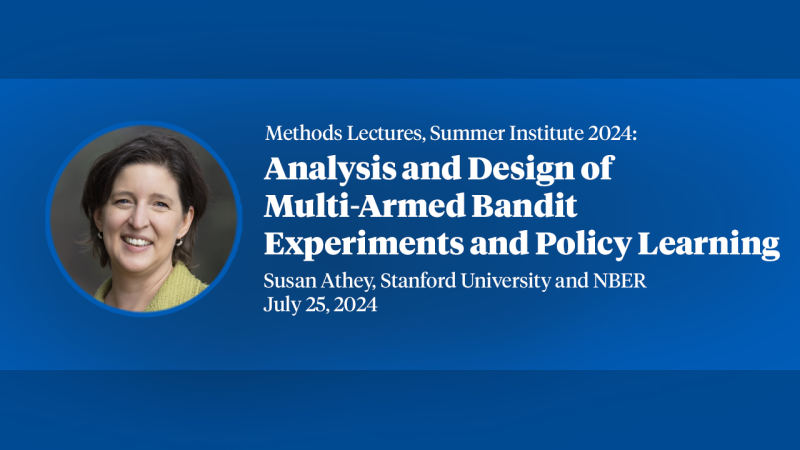Risk and Information in the Municipal Bond Market
Municipal bonds — munis — are issued by states, local governments, and other tax-exempt entities to raise money for roads, schools, utilities, public buildings, and other infrastructure investments. Totaling $3.7 trillion at the end of 2013, with approximately $400 billion in new issuance every year, the muni market is roughly one-third the size of the U.S. Treasury market. There are 50,000 issuers of municipal securities. Individual investors hold approximately 80 percent of all munis, either directly or indirectly through intermediated funds. There are three main ways in which munis differ from bonds issued by the federal government: (1) they have higher default risk, (2) they are much less liquid, in part because information in the muni market is limited, decentralized, and non-standardized, (3) and the interest earned on most munis is exempt from federal income tax.
In the area of muni default risk, Francis Longstaff and I compare the credit risk of large U.S. states with major Eurozone countries. 1 This comparison is interesting and timely because many U.S. states, like Michigan and Illinois, are fiscally challenged, as are several European countries, like Spain and Portugal. Second, states pack roughly the same economic punch as European countries: California's economy is larger than Spain's and approximately 90 percent the size of Italy's, and Michigan has an economy larger than that of Greece, Portugal, or Ireland. Third, both states and Eurozone countries are in currency unions - of the U.S. dollar and the Euro, respectively. There are many economic, legal, and political linkages between states, just as there are similar, but weaker, linkages among European countries. Most importantly, states are sovereign borrowers under the U.S. Constitution and there is no bankruptcy mechanism for state default, just as there is no institutional bankruptcy mechanism for any sovereign borrower. Both U.S. states and Eurozone countries have previously defaulted. Spain, Austria, and Greece defaulted in the 1930s and 1940s. Greece most recently defaulted in 2012. U.S. states have also defaulted: eight states went bankrupt in the 1830s and 1840s, ten states defaulted during the late 1800s, and the last state to default was Arkansas in 1933. We compare U.S. state and European country credit risk estimated from Credit Default Swap (CDS) contracts, in which purchasers of default protection receive a payoff when a sovereign defaults and in the meantime make regular, insurance-like payments to the providers of default protection. In our pricing model, defaults are triggered by two sources. First, Portugal may default because of an event specific to Portugal that does not affect other countries. Second, a Europe-wide shock could trigger a Portuguese default. Similarly, if the U.S. defaults, this might cause Illinois to default (exposure to systemic risk), but Illinois might also default on its own (state-specific risk). We find that U.S. and European systemic risk - the risk that affects all states or Eurozone countries in each respective currency union - is approximately the same, but it varies over time and is strongly related to financial market variables. For example, large negative returns in stocks lead to increases in systemic default probabilities, and systemic credit risk increases contemporaneously as credit risk in corporations rises. When uncertainty in financial markets increases, the resulting global flight to U.S. Treasuries reduces relative U.S. credit risk. We separate a state or Eurozone country's total credit risk into systemic and sovereign-specific components. Several states have little or no systemic default risk; in Illinois, New York, and Ohio, defaults are likely to be induced only by state-specific events. We find that systemic default risk is three times as large a component of default risk in Europe as it is in the United States. This result - that systemic risk exposure is much lower in the U.S. — directly contradicts theories that large systemic risk is caused by common macroeconomic fundamentals and close economic integration.
Richard Green and I summarize the illiquidity and poor information environment of munis - the second way that munis differ from U.S. Treasuries.2 The trading costs for retail investors are remarkably large. Round-trip transaction costs for individuals are in excess of 2 percent and often reach 5 percent. This is more than double what institutions pay, more than twice what it costs to trade a corporate bond, and many times what it costs to trade a stock. Dealer markups over the reoffering price, often represented to issuers as the price at which the bonds are sold to the public, can be as high as 5 percent. These costs represent roughly six months to one year of the return on a typical muni. Studies suggest that the high costs of trade are due in part to the monopoly power of intermediaries.3 Dividing up all muni bond transactions into deciles based on the number of trades per year, thus excluding bonds that never trade, the 10 percent most illiquid bonds trade once every five to six years. The typical bond trades twice per year: from a customer to a dealer and then from the dealer to another customer. The 10 percent most liquid bonds trade only once every two days, on average. One contributor to the poor liquidity of muni bonds is that munis are extremely heterogeneous and are bundled with complex embedded derivatives. These derivatives are not standardized and can vary widely from issue to issue, even within a given series of several separate bonds constituting a single underwriting deal. Approximately 60 percent of all muni financing in dollar terms involves embedded derivatives. Complexity, opacity, and the political economy of muni issuers often lead to sub-optimal behavior, which leads to unnecessary costs borne by taxpayers.
One such practice is advance refunding. Richard Green, Yuhang Xing, and I show that advance refunding led to $7 to $9 billion of lost value over 1995 to 2013.4These amounts are conservative, as data limitations restricted our analysis to only 65 percent of all pre-refunded bonds traded over this period. In an advance refunding, a municipality issues new debt to pay off an existing bond, which is not yet callable but will be callable in the future. Proceeds from the new debt, issued generally at a lower interest rate, are used to fund a trust that meets all interest payments up to the call date, and pays the call price, of the original bond. The trust generally holds U.S. Treasury bonds, which are specially issued by the Treasury for this purpose. Issuing new securities to fund payments on existing liabilities has zero net present value. But, in the advance refunding, value is destroyed by the issuer through pre-committing to call.
The City of Detroit (currently in bankruptcy) and the Detroit School District engaged in 19 advance refunding deals and by doing so lost $60 million in option value. In addition, there are significant fees paid by municipalities in entering refundings — which are often referred to as "de-fees-sance" by underwriters and traders. Although no value is created with an advance refunding, the practice sometimes provides short-term budget relief. Municipalities can only issue new debt to fund capital projects, but they are rarely restricted from refunding existing debt to meet operating needs, as long as the maturity is not increased. The advance refunding allows the municipality to borrow against future potential interest savings. Current interest expenses, paid out of the operating budgets, are reduced, while future payments after the call date are increased. The amount of implicit borrowing being done by advance refunding over 1995 to 2013 exceeded $13 billion. We find that there is a pronounced skew in the option value destroyed, with the worst 5 percent of transactions representing a destruction of value of $5.3 to $7.5 billion. Thirty of the worst 50 deals were done by school districts. In characterizing the amount of value destroyed, one of the most robust variables is the number of convictions of public officials divided by the state's population. States with more corrupt public officials are also states where municipal officers destroy more value in advance refundings. Poorer states also tend to lose more money in advance refundings. These results are consistent with municipalities using advance refundings as a non-transparent way to borrow money.
The third difference between munis and U.S. Treasuries is tax treatment. Indeed, a defining characteristic of munis is that most are exempt from tax. Muni yields are, on average, lower than Treasuries - except during the financial crisis of 2008 to 2009, and a few years afterwards. The tax exemption of munis lowers their yields, on average, compared with taxable Treasuries, whereas the aforementioned credit and illiquidity effects tend to raise muni yields. There are some important classes of munis with taxable coupons. Build America Bonds (BABs) were introduced by the federal government as part of the American Recovery and Reinvestment Act of 2009. The program expired on December 31, 2010, but there has been discussion in policy circles of bringing it back in some form. An investor in a BAB has to pay income tax on the interest payments, but the issuer's net costs are lower because it receives a subsidy from the federal government to offset its borrowing costs. The subsidy is for the life of the BABs. Since BABs are taxable, the program theoretically enlarges the market for munis beyond the traditional clienteles. I study the pricing of BABs with Vineer Bhansali and Yuhang Xing.5 BABs allow local and state governments to obtain financing at least 50 basis points lower, on average, than issuing regular munis. Individual investors subject to the highest marginal tax rates, however, receive higher yields buying regular munis rather than BABs. Two potential reasons regular munis have higher yields than after-tax BABs are the greater issue sizes of BABs, which fosters greater liquidity, and the fact that the taxable-bond curve is generally less steep than the muni-yield curve.
There are several interesting tax effects within munis. Even though a muni might be tax-exempt at issue, investors trading munis in secondary markets may be taxed on their investment in this bond. Depending on their purchase price and other factors, such investors may not face any taxes, or they may face ordinary income taxes or capital gains taxes, on the income from their investment. There can be different tax treatments for a given investor across different bonds from the same issuer. This feature makes the muni market a good laboratory to examine the effect of taxes on asset prices. All the taxes are paid at the bond's maturity or when the bond is sold, even though the interest payments are tax exempt. An attractive feature of studying tax effects in the muni market is that it is dominated by individual investors who must pay federal taxes, unlike other asset classes where corporations and institutional investors dominate and many of the institutional investors are tax exempt. Income taxes are paid if the muni is trading at market discount, which for a par bond occurs when the transaction price is sufficiently below par. Market discount is taxable as ordinary income. The tax code provides a de minimis exemption, so that if the market discount is small, the investor pays capital gains tax instead of income tax. Finally, if the transaction price is above par, then the muni is not subject to tax. The tax code does not require the amortization of muni premiums, as it does for taxable bonds. I find that, as expected, yields on market-discount munis are higher than yields on munis that are fully tax exempt; this compensates for their additional tax liabilities.6 But the implied tax rates are much larger than can be supported by present-value models. These higher yields are not due to illiquidity or other effects. The implicit tax rates sometimes exceed 100 percent! A rational story for the high yields of market-discount munis could be a convenience yield demanded by individuals to deal with the complexities of computing tax liabilities. A behavioral story is that individuals have a particular aversion to taxes not justified by rational models. The tax premium can persist because the muni market is fragmented: even if investors were to know about the effect, many may not be offered market-discount bonds by dealers. Large mutual funds also tend to shy away from market-discount munis because they would be required to pass through income taxes to their underlying individual investors - and many individual investors are drawn to these muni mutual funds to avoid income taxes in the first place.
1. A. Ang and F. A. Longstaff, "Systemic Sovereign Credit Risk: Lessons from the U.S. and Europe," NBER Working Paper No. 16982, April 2011, and Journal of Monetary Economics, 60 (5), 2013, pp. 493-510. ↩
2. A. Ang and R. C. Green, "Lowering Borrowing Costs for States and Municipalities Through CommonMuni," The Hamilton Project Discussion Paper 2011-01, The Brookings Institution and Municipal Finance Journal, 34 (3) 2013, pp. 43–94. ↩
3. R. C. Green, B. Hollifield and N. Schürhoff, "Financial Intermediation and Costs of Trading in an Opaque Market," Review of Financial Studies, 20 (2), 2007, pp. 275–314. ↩
4. A. Ang, R. C. Green, and Y. Xing, "Advance Refundings of Municipal Bonds," NBER Working Paper No. 19459, September 2013. ↩
5. A. Ang, V. Bhansali, and Y. Xing, "Build America Bonds," NBER Working Paper No. 16008, May 2010, and Journal of Fixed Income, 20 (1) 2010, pp. 67–73.↩
6. A. Ang, V. Bhansali, and Y. Xing, "Taxes on Tax-Exempt Bonds," NBER Working Paper No. 14496, November 2008, and Journal of Finance, 65 (2), 2010, pp. 565–601. ↩


